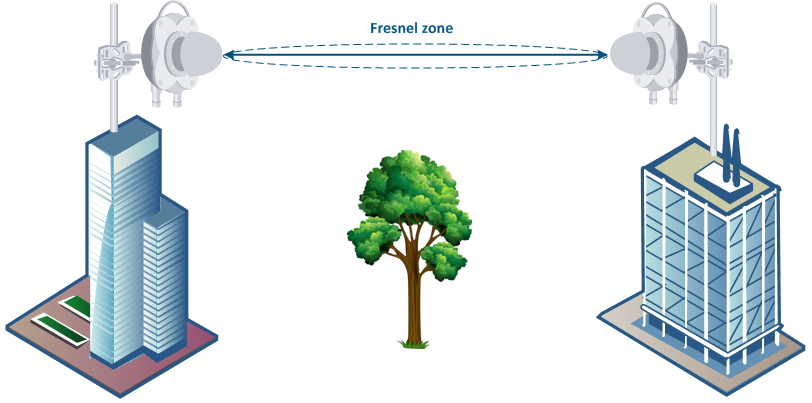Successfully pass the free certification exam at IW Academy and become an Infinet Certified Engineer.
During link planning, such factors as distance, obstacles, humidity, temperature, atmosphere pressure and the link margin should be taken into account. Radio waves in the 70.5-76 GHz frequency range encounter additional atmospheric attenuation beyond that which is expected in free space due to water absorption, including rain fade. The amount of additional atmospheric attenuation will vary, depending on your specific installation environment. So we strongly recommend to use the InfiPLANNER tool for link planning where the rain impact is taken into account.
InfiPLANNER
InfiPLANNER is a link planning tool, which allows to design networks using Infinet Wireless devices for optimal deployment and cost effectiveness. It accounts for different scenarios based on geography, distance, antenna height, transmit power, device models and other factors. It outputs an installation report that defines the parameters to be used for configuration, alignment and operation. Use the installation report to compare the predicted performance with the actual link performance. InfiPLANNER is available at https://infiplanner.infinetwireless.com.
NOTE
You can find more detailed information about InfiPLANNER in the "InfiPLANNER: Link Planning Tool" online course.
Range and obstacles
Make sure that line of sight is provided when planning the device placement for a point-to-point link in order to achieve maximum range and performance between two devices. Perform a survey to identify all the obstructions (such as trees or buildings) in the path and to assess the risk of interference.
CAUTION
Any obstacle in the propagation path is critical for 70 GHz frequency band, make sure the line of sight is 100% clear.
Below is an incomplete list of possible obstructions along the signal propagation path:
- Neighboring buildings.
- Trees.
- Bridges.
- Power lines.
NOTE
More detailed information about radio signal propagation is available at "Wireless Networking Fundamentals" online course.
Wireless device placement
General recommendations for device installation:
- Keep 100% clear line of sight between devices. In case of installations over vegetation and forest, make sure the direct line of sight stays above the trees; in urban environments - above the tallest buildings along the radio path.
- Install wireless devices as far as possible from other radio devices (the recommended distance is at least 2 meters between the edges of the antennas).
- Install devices from power lines with a voltage higher than 35 kV at a distance at least 100-150 meters.
- Make sure the devices are located outside the area of water streams and splashes formation, which can affect the enclosure for a long time.
- 70 GHz antenna has a very narrow beam, keep devices directed strictly to each other.
